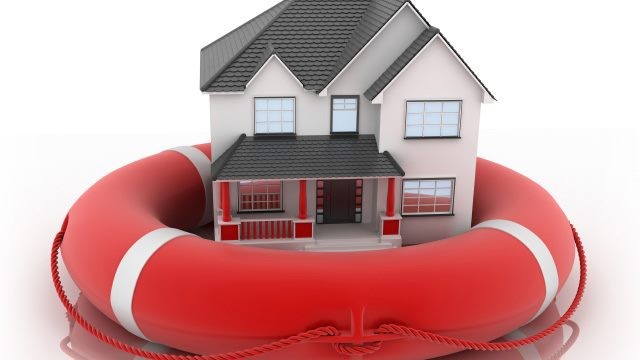The Home Appraisal Your Key to a Successful Refinance
Post on: 24 Июль, 2015 No Comment

When you refinance your mortgage. everything hinges on the appraisal. If your home’s value is so low that you’re underwater, you can’t refinance. If your appraisal value puts your home equity at less than 20%, you’ll get stuck paying for private mortgage insurance (PMI) or bringing cash to the table to do a cash-in refinance. What’s more, you might not get the lowest interest rate, since lenders consider borrowers with less equity to be riskier. If you’re thinking about refinancing, you should understand the appraisal’s essential role in the process.
What Is a Home Appraisal?
An appraisal is a licensed or certified professional’s opinion of a home’s value provided by a disinterested third party. The appraiser gets paid for providing the service of valuing your home, but has no skin in the game when it comes to whether you’re able to refinance as a result of the value he or she arrives at. In a refinance transaction, the appraisal protects the bank by ensuring that it doesn’t lend the borrower more money than the property is worth. If the property later goes into foreclosure for any reason, the lender wants to be able to resell the property and get its money back.
The appraiser visits your home for between 30 and 45 minutes to measure its dimensions, examine its amenities and evaluate its overall condition both inside and out, taking photos of the exterior, the garage and every interior room. He or she then examines the records of properties similar to yours – ideally properties in your neighborhood that have sold recently. Based on the home visit and these records, the appraiser arrives at a professional opinion of how much your property would sell for if you put it on the market. The bank uses this value – along with your income, assets and credit history – to determine how much it will lend you.
How Home Appraisals Work in Today’s Market
Three types of refinance transactions do not require an appraisal. Neither the Federal Housing Administration’s streamline refinance nor the Veterans Administration’s Interest Rate Reduction Refinance Loan requires one. In certain cases, the Home Affordable Refinance Program does not mandate one, as well. All other types of refinance transactions require an appraisal.
Federal regulations dictate how lenders and appraisers must behave throughout the appraisal process. After the housing crisis, the government wanted to increase appraiser independence to prevent the possibility of lending based on inflated home values. The Dodd-Frank and Truth in Lending Acts now require appraisals to be “conducted independently and free from inappropriate influence and coercion.”
Because federal appraiser-independence requirements define a narrow scope of acceptable interactions between appraiser and loan officers, lenders are afraid that having any contact with appraisers could be construed as violating the law by attempting to influence the appraiser’s opinion before the appraisal is completed. Lenders err on the side of caution to avoid the possibility of severe disciplinary action. Loan officers and brokers cannot select the appraiser, nor can the borrower. Borrowers also can’t submit an appraisal that was performed for a different lender, though they “may tell the bank that another appraisal exists, and the bank can request the appraisal report directly from the other institution.”
The lender often will order the appraisal through a third party called an appraisal management company (AMC). Using an AMC is not a requirement, but that is the common approach to appraiser independence, says Joe Parsons, senior loan officer at PFS Funding of Dublin, Calif. a regional banker and mortgage broker.
Many lenders – especially small, local ones – have direct referral relationships with a small panel of appraisers and don’t use an AMC. Or the lender may have an in-house independent appraisal department. The appraiser should have local knowledge of the area (called market competence). Appraisers are expected to follow the Uniform Standards of Professional Appraisal Practice issued by the Appraisal Foundation, a professional organization, though these standards are not law.
Home Appraisal Fees
Appraisal fees vary by state, but appraisers must charge customary and reasonable fees for the area. Expect to pay $300 to $500 for an appraisal of a standard single-family home.
“More complex properties are more expensive because the inspection takes more time,” says Erin Benton, vice president of Decorum Valuation Services, an appraisal management company in Ellicott City, Md.
You must pay the fee up front at the time of the appraisal, not at closing; regardless of whether your loan closes, the appraiser still did the work. While the fee may seem worthwhile if it enables you to get the refinance terms you want, it can seem like a waste of money if a low appraisal means you can’t refinance.
Since lenders cannot discuss a home’s value or anticipated “target value” with an appraiser at the time of assignment, homeowners can’t get an appraiser’s ballpark estimate of whether their home is likely to appraise high enough for them to refinance before they pay for the service, as they could before the new regulations. At best, you can search for recent comparable sales on websites such as Zillow and Redfin, but their records may be incomplete.
Another option is to ask a real estate agent to do a comparative market analysis and provide you with printouts of recent comparable sales from the Multiple Listing Service, says Bruce Ailion, an agent with RE/MAX Greater Atlanta. Ask nicely, since they’ll be doing you a favor – unlike a home sale, the agent won’t earn any commission from your refinance.
Improving Your Chances of a High Appraisal
The value the appraiser gives your home largely depends on the recent sales prices of comparable properties, but you’re mistaken if you think you can’t do anything to help your home come in at the high end of its potential appraisal value.
Getting your home appraised is similar to going on first date, Ailion says. While you have no idea how your partner will like or evaluate you, being well groomed substantially improves your chances of being deemed attractive. “So it is with the appraisal,” he says.
“Your property should be neat and clean, uncluttered and easy to inspect. Any pets should be contained and smells masked. You don’t want the appraiser to be rushed to get out,” Ailion says.
Here’s how appraisers describe how they work:
“Generally, it should not matter if your lawn is not mowed or your house is a mess,” says certified residential appraiser Ralph J. Vaccari, president of Vaccari & Associates in
Marblehead, Mass. “It’s important to realize, though, that a dirty or unkempt home can increase its appearance of wear and tear beyond normal, and that condition can, in fact, affect value.”
The appraiser cares about the following, says Vaccari:
- exterior and interior condition
- total room count
- functionality, including interior room design and layout, and functional obsolescence

- improvements to kitchens and baths, windows, the roof and the home’s systems (heating, electrical and plumbing) over the previous 15 years that make the home more up-to-date, functional and livable by today’s standards
- condition and age of the home’s systems
- exterior amenities such as garages, decks and porches
- location
- unappealing features, such as an exterior appearance that’s inconsistent with the rest of the neighborhood
It’s a good idea to point out features that may not be immediately apparent that could potentially add to the appraiser’s opinion of value, Parsons says.
Before the Appraiser Comes
Preparing your home for an appraiser’s visit, however, is different from preparing it for a prospective buyer.
“When you are opening your home to a prospective buyer, you want to trigger emotional responses,” Parsons says. “As a seller, you want that buyer to be able to imagine how happy and comfortable they will be there. No such subjective considerations apply to an appraisal,” he says.
Vaccari adds that a homeowner wouldn’t make a change, such as ripping up old carpet to reveal hardwood floors, for an appraisal, as he or she might for a seller. But freshening up the home’s paint, both inside and out, can help, as can clearing away clutter to allow full access and viewing of all areas of the home, including the basement.
Finally, “If the tax records are incorrect, point that out,” says Ailion.
Otherwise, it is the appraiser’s responsibility to discover problems and ask questions where warranted, Vaccari says.
Getting a Second Opinion on a Low Appraisal
Sometimes the appraiser’s value is not only lower than you’d like it to be, but lower than you think your home is worth.
“An appraisal is just one person’s opinion,” Ailion says. “While this is a trained and educated opinion, as with all professions, there are good and bad practitioners.”
Given the strict federal regulations governing the process, is there anything you can do about a low appraisal?
“If the homeowner does not like the value of the appraisal, they can write a letter of appeal to the lender or AMC, but the chance of an appraiser changing his or her opinion is very slim, unless the homeowner has overwhelming evidence that the value is off,” says Benton.
Your appeal will only succeed if you show that the appraiser made a significant error, such as listing the square footage or room count incorrectly; disregarding an important amenity, such as a pool or spa; or disregarding a comparable sale that might support a higher value while “cherry picking” a less-suitable comparable that would indicate a lower value, Parsons says.
You might also make a case by pointing out that the comps used were in an inferior school district or an inferior subdivision that did not have an HOA with swimming pools and tennis courts, that the all the comparables were distressed or REO sales. or that they have other negative externalities influencing value, such as being on a busy street, Ailion says. “Explain why they are different and not equal to yours. You must prove something is in error with the comparables selected.”
Your Options When the Appraisal is Low
If you can’t successfully challenge a low appraisal, how do you ensure the refinance goes through? If the appraisal puts you at less than 80% equity – meaning the lender will require you to pay for private mortgage insurance – you can do a cash-in refinance and bring several thousand dollars to closing to get to that magical 80% loan-to-value ratio and avoid PMI. You can also choose to pay PMI for now. If home values continue to rise, you can provide comparable sales to your mortgage servicer and ask it to remove PMI even if you haven’t yet paid down much of your principal. If the appraisal reveals that you’re underwater, however, all you can do is wait for the market to improve unless you qualify for a government assistance program, such as HARP.
The Bottom Line
Understanding how the appraisal process works will give you the best chance of getting an appraiser to assign the highest possible value to your property. Appraisals don’t always come in at the values borrowers hope for, and they are a human process with room for subjectivity and mistakes. You can appeal a low appraisal, but you’ll only succeed with strong data to back you up.














